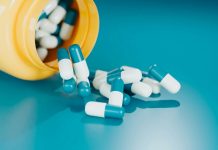
In a new study, researchers found that self-reports of smell and taste changes provide earlier markers of the spread of infection of COVID-19 than current governmental indicators.
They also found a decline in self-reports of smell and taste changes as early as five days after lockdown enforcement, with faster declines reported in countries that adopted the most stringent lockdown measures.
The research was conducted by a team at Pennsylvania State University and elsewhere.
In their study, the researchers used data from the Global Consortium for Chemosensory Research survey, a global, crowd-sourced online study deployed in more than 35 languages.
Specifically, the team examined data that were collected from April 7 to May 14, 2020, although study recruitment is still ongoing.
In addition, they looked at data from the French government—which beginning on May 7, 2020, has been categorizing various geographical areas of the country as red or green, depending on their COVID-19 prevalence.
Compared to green areas, red areas were characterized by the higher active circulation of the virus, higher levels of pressure on hospitals, and reduced capacity to test new cases.
Finally, the team compared data from France with data from Italy and the United Kingdom, each of which implemented lockdown measures at different times and with different levels of stringency.
Overall, the team found that smell and taste changes were better correlated with the number of COVID-19 admissions to hospitals than France’s current governmental indicators, which look at the ratio of ER consultations for suspicion of COVID-19 to general ER consultations.
Specifically, they found that the peak onset of changes in smell/taste appeared four days after lockdown measures were implemented.
In contrast, the governmental indicator based on ER consultations peaked 11 days after the lockdown.
The findings are consistent with emerging data showing that COVID-19-related changes in smell and taste occur in the first few days after infection.
They suggest that self-reports of smell and taste changes are closely associated with hospital overload and are early markers of the spread of infection of SARS-CoV-2.
Therefore, potential outbreaks and the short-term efficacy of a lockdown could be monitored by tracking changes in smell and taste in the population.
One author of the study is John Hayes, professor of food science, Penn State.
The study is published in Nature Communications.
Copyright © 2020 Knowridge Science Report. All rights reserved.



